
Innovations Include New Portable Stage Options and a Revolutionary Mobile Building Structure
I stopped into Montreal recently to visit some friends at the Osheaga Music and Arts Festival, which was staged this summer from Aug. 2-4. Stageline, the manufacturer of mobile stages located outside of Montreal, had seven separate stages deployed over the massive grounds. From dueling SAM750’s standing side-by-side to other sized stages, their presence was everywhere.
Stageline has been busy. While they have defined the modern era of collapsible mobile stages, they are not resting on their laurels as innovation is in their DNA. Not only did they design a new lightweight medium-sized stage that made its debut at Osheaga, they have come up with a whole new collapsible concept: The Mobile Space. PLSN guides you through these new innovations.
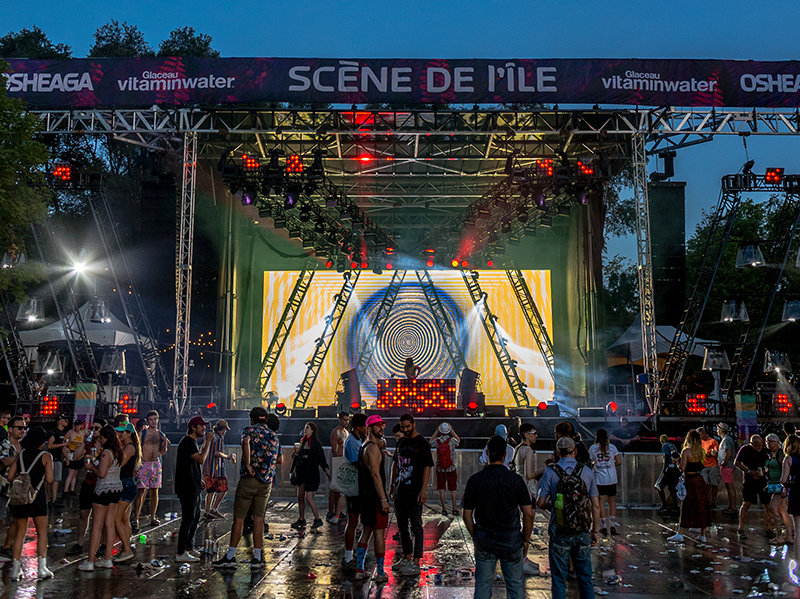
The SAM450
Stageline’s line of mobile stages grew to maximum proportions with the SAM750, a stadium sized stage that can accommodate almost any sized production on its 70-by-50-foot (WxD) deck. Before that they had released the SAM575, which offered a shed/arena-sized stage that was 50 by 38.5 feet (WxD) deep. Most arena sized touring shows will fit onto this stage. Below that line is the SL320. It offers a comfy 40-by-40-foot stage area and protection from the elements and accommodates a heavy load of gear. What Stageline worked on was a similar sized stage that sits in between the SL320 and SAM575, able to hold more weight and provide more rigging features. Hence the SAM450 has come to fruition.
A 40-foot-wide stage is what this writer considers a good sized “theater stage” for concerts. But like all theaters, one needs the ability to hang rigging points from anywhere on the grid as well as place a large, modern-day LED wall across the back. The new SAM450’s roof will answer the needs of those looking for a stage that can accommodate larger size productions while retaining the same versatility as the SL320. I saw the SAM450’s debut myself. It was set up for Osheaga in one of the quieter shady areas of the festival with DJs playing while people escaped the sun and afternoon heat. It was equipped with a lighting rig heavily filled with large format moving lights and featured a wide rear video wall hung on the structure behind the DJ.
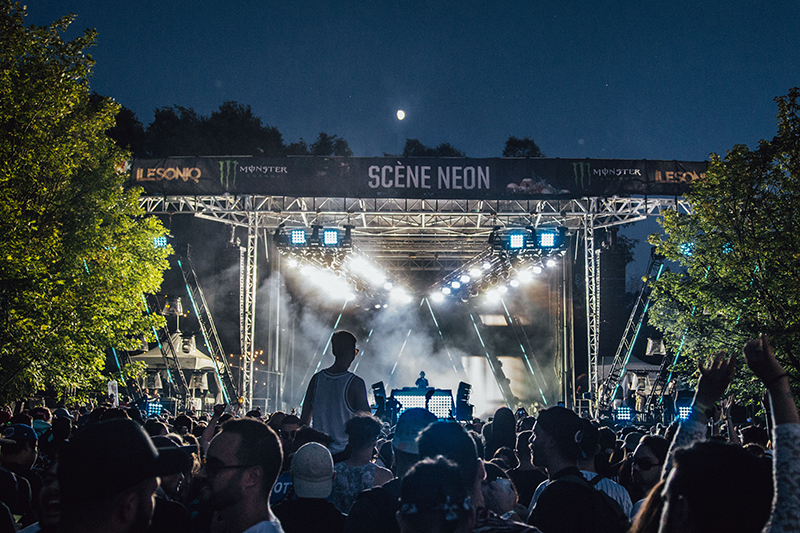
In Stageline’s words, the new SAM450 has been built and designed using the latest manufacturing technology and tools available and it shows. The roof has been designed in a new manner to allow it to hold more weight. Rather than rely on welded trusses of aluminum, their lighter aluminum frame now consists of metal pieces bolted together. The company explains that because welding can reduce the resistance in metal, it has chosen to use a mechanical assembly instead. Stageline notes that this allows for a lighter design that delivers more capacity, and the increase in strength with this concept is indeed remarkable. The 44-foot Stageline SAM450 can actually hold 66,000 pounds of show support equipment.
The trim height of the roof from the stage is 26.75 feet. There are three main beams traversing the stage that can each accommodate 6,000 pounds on multiple points, as well as the front and rear load-bearing headers. The rear beam can allow a production to hang a 40-foot-wide video wall that weighs 6,000 pounds with just four rigging points. Rigging hoists can still be hung over any part of the stage by installing square aluminum beams between the cross stage trusses with the use of custom made, quickly placed brackets.
There are several points in the roof that can hold heavy loads, such as the downstage corners where audio can hang a line array on either one of two points that can hold 3,000 pounds. It enables the audio team to hang the subs right behind the array on a rigging point that can hold 2,000 pounds, freeing up the entire Fly bay for video screens and banners.
Offstage and downstage on either side are bolted Fly bay trusses that extend out 10 feet from the canopied roof without any cable. Each Fly bay truss is connected to the main roof frame (the header) and has a 6,000-pound rigging capacity, ideal for side projection screens, small LED walls or as I saw at Osheaga, to suspend more trusses of lights. The SAM450 has the capability of making this truss extend 20 feet in total away from the stage by adding another 12-inch box truss vertically that runs to the ground. This adds another 4,000 pounds to the rigging capacity for a total of 10,000 pounds per side.
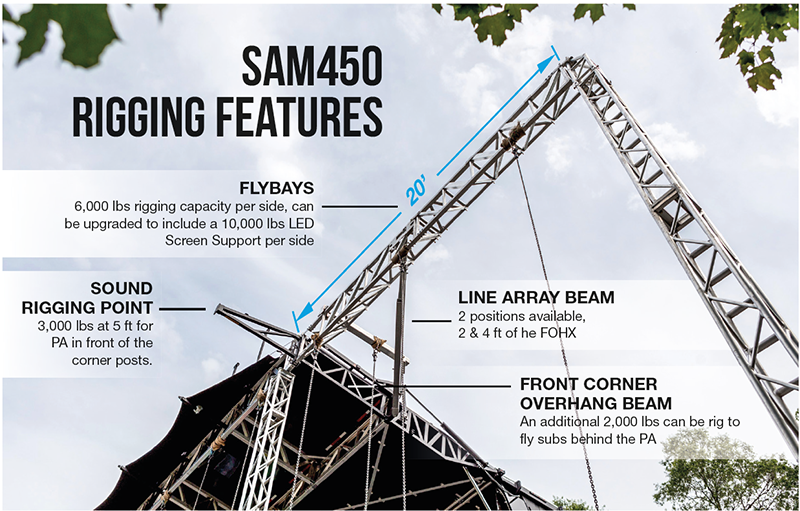
There are also five integrated FOH pipes that stick out from the downstage edge. They hold up the downstage canopy and they a have total rigging capacity of 5,000 pounds.
The structure can withstand up to 115 mph without wind walls and 77 mph with wind walls. As an additional safety feature, the wind walls are retractable.
The roof is lifted via the same type of hydraulic system utilized in the SAM575 / SL320 models. The electric starter is standard while the push to stab function is now a lever, making it easier to activate. All the hydraulic levers are now illuminated as well.
Everything one sees on this stage is included in the 48-foot-long trailer. The gross weight of the whole trailer with all the stage components is 49,000 pounds. The truck can park on any flat place (with or without a slope), including a grass field. The sides of the truck fold up and out with the use of hydraulic arms mounted on center on both ends of the stage. The stage then folds out on either side to reach the 38.5-foot depth.
Legs are put in place along the perimeter and center to support the whole stage after it’s lifted off the ground with another hydraulic lift the floor of the stage can level at heights ranging between 5.25 and 6.6 feet. The floor capacity is 150psf and is well braced underneath with two types of legs and one set of cross braces connecting everything into one solid, rigid frame.
There is a small generator/engine built into the trailer to power the hydraulics as well as work lights and recharge the battery. Their smart storage system has holes and shelves everywhere, designed to fit every leg, bracket, cross beam, screw jack, wood pad, etc., that is needed for assemblage.
Offstage of the SAM450’s main stage are sound wings on both sides to support the needs for technicians, dimmers and audio elements. They also serve as load-in access upstage. Stageline offers the optional 16-by-16-foot modular (with cover) sound wing for either side of the stage or a kit that covers a 16-by-32-foot area. These load in the same 48-foot trailer. Other options include retractable backdrops and side banner systems.
Despite this being the first festival that the product was utilized, it still only took four hours for four techs to erect the stage.
Stageline founder Yvan Miron is proud to say that his team came up with a stage that truly integrates all the best features that to this day make the SL320 and the SAM575 the most sought after stages in their category.
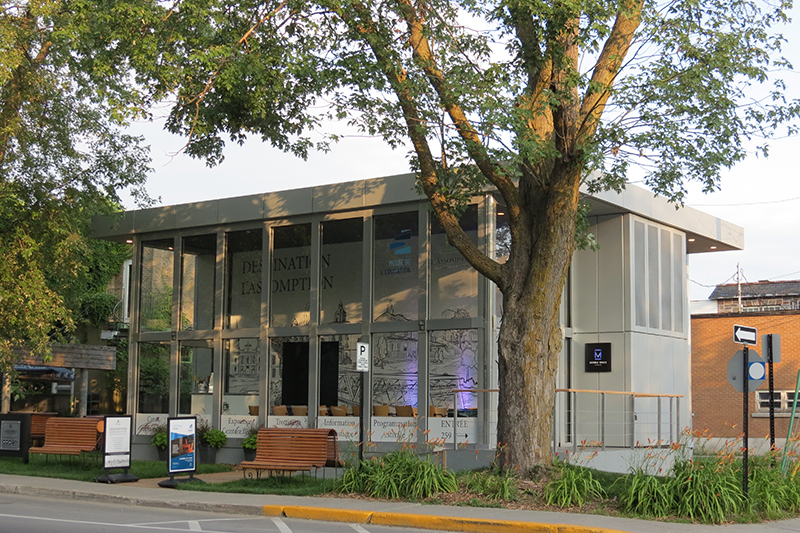
The Mobile Space: A Mobile Building Like No Other
Imagine you are in a new housing development and need a temporary office, but a typical rental trailer doesn’t appeal to you. Imagine there’s an outdoor festival you are producing, and you wish you had a few mobile, waterproof storefronts you could set up for a week that would magically fold up and disappear the day you no longer need them. But you’d like them to be architecturally pleasing to the eye and have a climate-controlled environment. Then you may be looking for the first of its kind, the Mobile Space, an innovative structure that is easily transportable, deployable and transformable.
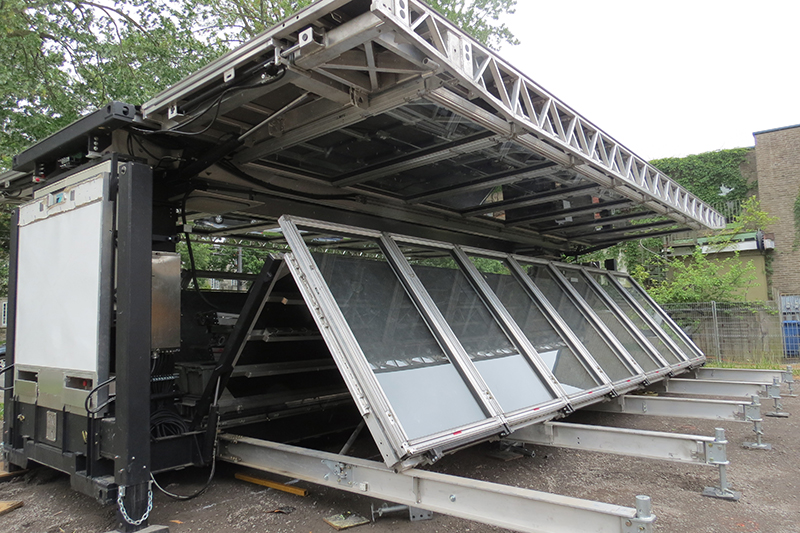
I took a trip up to Stageline’s hometown of L’Assomption in Quebec, Canada (45 minute drive outside Montreal) to check out the prototype of the first unit. It was located on the Main Street of L’Assomption, a small town where Stageline is located. It’s being utilized as a local museum/exhibition center from June until the end of September. If I didn’t know what I was looking at beforehand, I would have sworn it was a very elegant permanent metal and glass building.
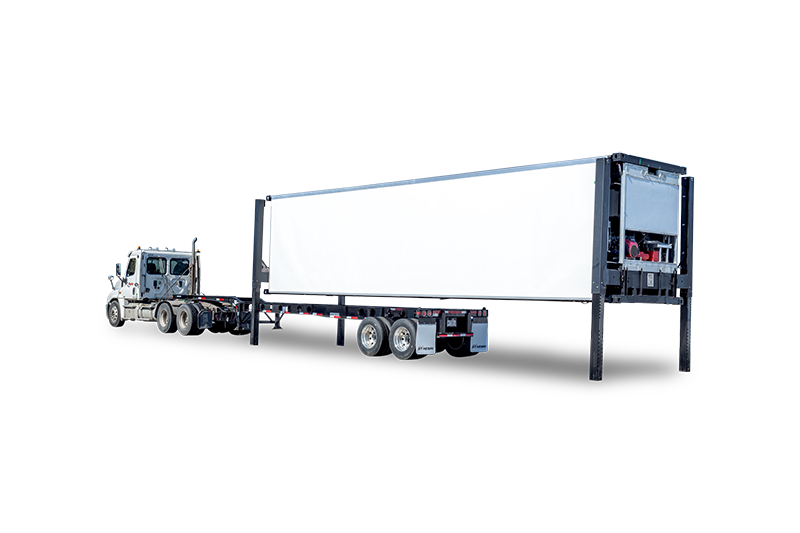
The Mobile Space is different from Stageline’s mobile stages, as the whole design revolves around the structure being the same size as a shipping container (Seatainer). The Mobile Space can be transported on a typical container trailer via the road, or overseas on any shipping vessel. The trailer can unload the structure into any space or surface, from a hard stone slab to a grassy field. It can be placed on uneven grounds yet be easily leveled by the hydraulic system which includes outriggers and adjustable legs.
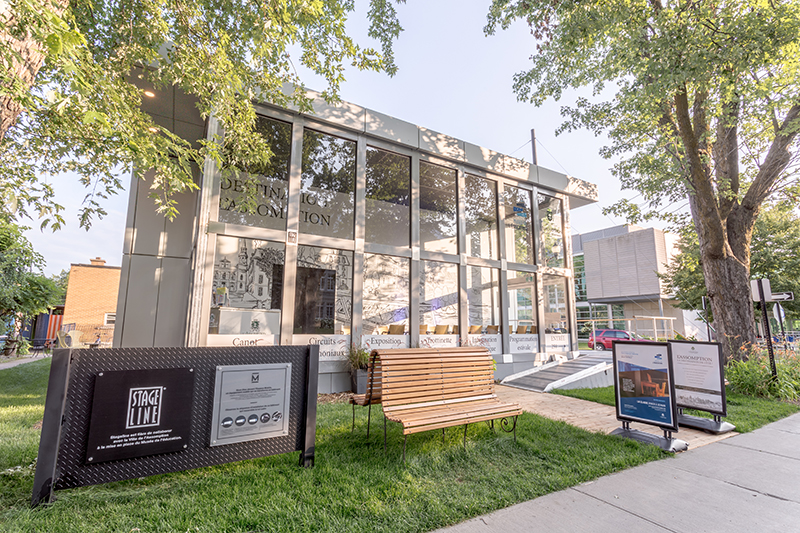
Once the base is leveled, the pre-assembled walls and roof unfold with the use of hydraulics, rapidly expanding the structure to ten times the volume that it took up on the container trailer. The overall footprint of the building is 42 feet, 7 inches by 33 feet, five inches, while the interior space is 32 by 32 feet. The roof height appears to be 22 feet and the interior clearance 17 feet, but I’m told that Stageline is working on offering the Mobile Space with models available at different heights. Once constructed, the structure is totally rigid with a strong roof that contains rigging options. If one needed to hang some LED elements, specialty lighting or audio, it’s not a concern.
The hydraulic system, power panel and AC/heating units are concealed in the sides of the building in an enclosed, lockable area. With the exception of these locations, the outside of the Mobile Space I’m viewing has windows on all sides in four-by-eight-foot (WxH) bays, stacked two high. All the panels are held by metal frames that join together in an aesthetically pleasing, modern look.
Because it’s so modular, a single or double-wide door can fit anywhere on the enclosure. If a client decided to forego glass in part of the structure, they can either black out the glass or substitute an opaque material in place. The space is designed so the user can install the floor covering of their choice. While the structure comes equipped with a lighting system, one can also hang a drop down ceiling complete with lighting fixtures, as the Mobile Space comes with six dimmable electrical circuits in the ceiling. Prewired AC outlets are available as well. The built-in electrical panel has 125A available for distribution.
The Mobile Space is also an environmentally responsible concept for mobile buildings as it can be installed virtually anywhere with no site preparation and no heavy machinery. Again, Stageline has come up with a new concept that combines, space, mobility and high end architecture while being true to their commitment to sustainable development.
For more information, please visit www.stageline.com


